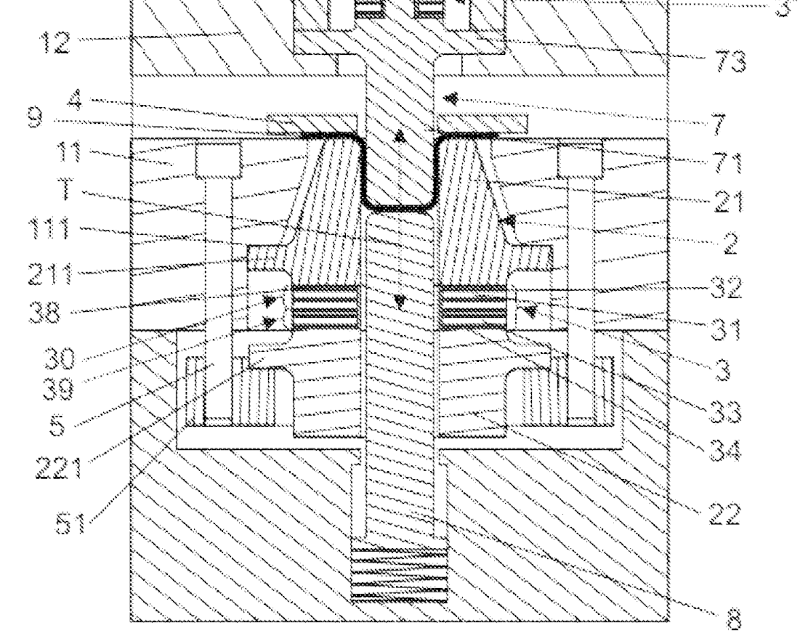Small cylindrical parts are often formed through deep drawing — a process by which a punch forms the finished piece from a flat sheet of metal using a forming die. If it sounds like that stresses the metal, it does. But researchers at Fraunhofer have found a way to reduce friction protecting both the material and the tools that do the forming. The process — known as VibroDraw — uses ultrasonic vibrations at around 500 Hz.
Researchers claim a 20% reduction in friction now, and it may be possible to go even further. With less friction, it is possible to do a deeper draw in a single stage. It also creates less heat which is good for tool life and prevents overheating lubricant. The process has a patent if you want more details. You might need to brush up on your German, though. Unsurprisingly, the vibrations are from a piezoelectric transducer.
Copper is soft enough to use 3D printed dies. We don’t know if this technique would help with that or not. Then there’s hydroforming. If you have any results using ultrasonics with these or any other techniques, be sure to let us know.
















Looking forward to a Hackaday article on explosive forming…
Probably as close as you’ll get for now (world’s least comfortable throw pillow):
https://hackaday.com/2014/08/13/hydroforming-in-the-garage-with-a-pressure-washer/
A yacht called Gelignite would like a word ;)
http://www.boatgen.com.au/Gelignite
Double plus good!
Anything to lower the cost of ammo.
500 Hz isn’t ultrasonic as far as I’m aware, but it is still the same general idea. You could actually hear this, for example. I wonder what it sounds like. I know what a 500hz sine wave sounds like but I doubt this makes a perfect sine wave.
Yeah wonder if they mean the ultrasonic is turned on and off 500x/second
…Also you can use 3d printed dies for all kinds of metal, as long as you don’t mind it wearing out very quickly:
https://www.youtube.com/watch?v=KTnaALsKpH4
Yeah, I’ve formed 2cm diameter hemispheres in thin steel sheet with 3d printed dies. I think there’s a lot of capability there that people haven’t yet explored.
Managed to snag an ultrasonic processor for $30 on eBay 4 weeks ago, and just last week figured out how to use it to drill a hole in rock pretty reliably.
Haven’t figured out how to do glass or metal (maybe that’s not possible with ultrasonics), but when I’m satisfied I’ll write it up and submit it.
Maybe I’ll try this process as well.
Lots of ultrasonic processors and things available on eBay, but they’re usually 10x as expensive.
The patent mentions 15 kHz and 20 kHz generated by piezoelectric transducers, which is where the confusion arrises for a patent called “Deep-drawing or wall-ironing device and deep-drawing or wall-ironing method with ultrasonic superimposition”. The vibrations used are not always in the ultrasonic range.
500hz is about 26 hz shy of Middle C
Maybe 500Hz is the modulation freq?
So there’s a VibroDraw story on MSN. It sounds like the machine already had a 500 hz operating cycle, and the new invention is to layer 15 Khz vibrations on top of that to reduce the friction and reduce the possibility of cracking and tear-through.
Just a quick note: Please don’t write “Fraunhofer” as such. It’s a large umbrella organisation with a lot of different research areas and institutes. It’s a bit akin to reporting on research done by the “University of California,” to use an American example. While it’s not wrong per se, writing the proper name of the institute (“Fraunhofer-Institut für Werkzeugmaschinen und Umformtechnik IWU”, or just Fraunhofer IWU) is just better journalistic writing. The same principle applies to the “Max-Planck” institutes.
So, comments pointing out wrong links in the “first draft” of articles just get deleted now? No thanks, no reply at all – just removed?
Guess next time I’ll just don’t “report” false links…
Or is one not allowed to post “backend” links like https://hackaday.com/wp-admin/post.php?post=766967&action=edit ?
Surely that’s just sonic, not ultra?
All the comments about 500 Hz not being ultrasonic led me to read the original article and see what it actually said. Here’s the relevant bit:
“The solution is ultrasonic vibrations—these reduce friction significantly within the material and in contact with the tools. In the VibroDraw process, Fraunhofer IWU, in collaboration with MARK Metallwarenfabrik GmbH and DEVAD GmbH, has successfully integrated ultrasonic vibrations into industrially relevant deep drawing processes with cycle rates of up to 500 strokes per minute.”
So, a) the vibration rates are presumably actually in the ultrasonic range, they just enable the machine to cycle 500 times per minute; and
b) 500 strokes per minute is not 500 Hz, it’s 8.3 Hz.